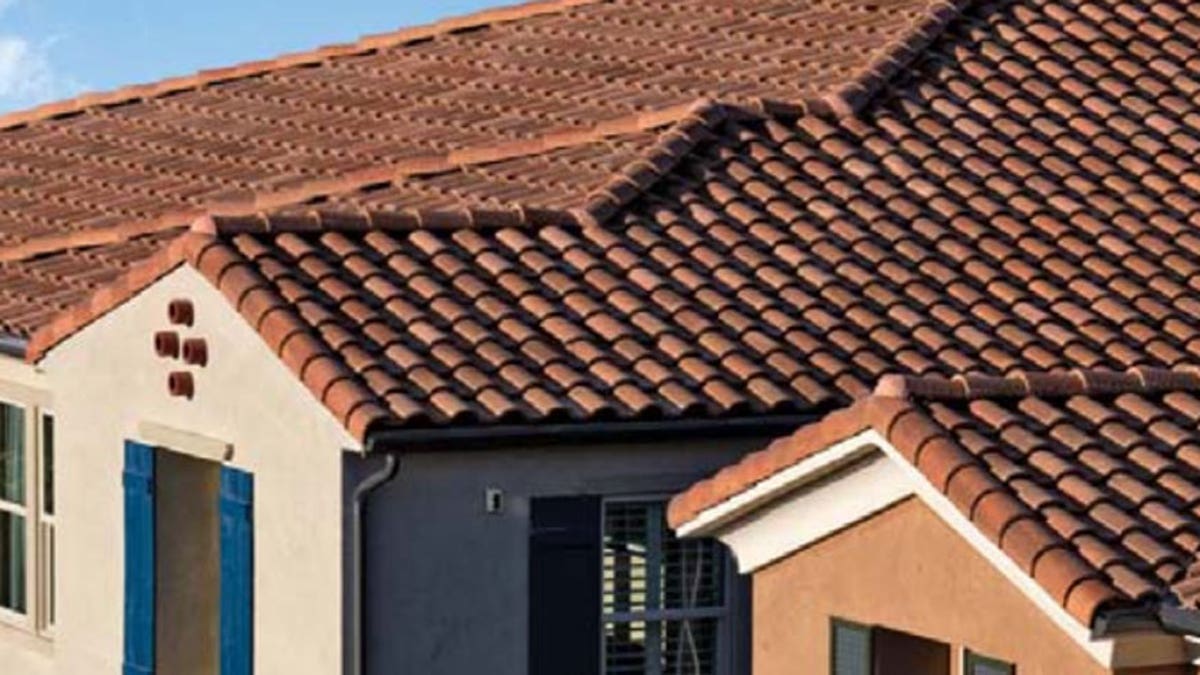
(Boral Roofing)
The typical home today is made up mostly of wood, glass, drywall and fiberglass —the same components we’ve been using to build homes for decades. But the science of building materials has improved by leaps and bounds over the last few years and a new breed of building materials is starting to hit the market. If you’re eager to check out what the future holds, here’s the latest and greatest in new building materials.
Smog-Eating Roof Tiles
You roof could be doing double duty: sheltering you for the elements and scrubbing the air of harmful smog. By embedding roofing tiles with titanium dioxide — a substance found in toothpaste and sunscreen — manufacturers have been able to make a surface that gobbles up smog in the presence of sunlight. As an added bonus, the pollution gets converted into nitrates, a kind of fertilizer. So when the rain comes, it washes this beneficial substance down onto your lawn, helping it grow.
Flexible Concrete
Concrete is the basic building block of modern infrastructure and while it plays a crucial role in keeping things upright, it has one pretty big flaw: it’s extremely brittle. This brittleness leads to cracked foundations, potholes in the spring time, and can create a pretty dangerous environment during an earthquake. Fortunately, scientist have figured out a way to make concrete flexible. By embedding the concrete with elastic polymers, scientists are able to make the concrete pliable enough to bend.
Graphene
One of the most common elements on the planet, carbon doesn’t seem like anything special. But by reconfiguring its atomic structure, scientists have figured out how to transform this basic element into something extraordinary. Graphene is a form of pure carbon that is laid out into sheets that are only one atom thick. Scientists and engineers are only starting to understand the many uses of this wonder-substance: it’s a super-conductor, it can make building materials stronger, improve solar cell efficiency and extend battery life. Scientists are still figuring out new and exciting applications for graphene and it’s likely we’ll see this substance make a big impact on a wide range of materials in the not-too-distant future.
Aerogel
Fluffy yellow or pink fiberglass is one of the unsung heroes of the home — it’s cheap, easy to install, and once the walls are sealed up, you never have to think twice about it. While it does a decent job keeping your home the right temperature, there are much better insulating materials out there. Aerogel is silica-based material that is extremely porous, and holds a “Guinness Book of Records” title as the world’s best insulator — it’s actually 39 times more efficient than fiberglass. While the material has been around for decades, it has only recently started to make it’s way into buildings as a form of insulation. But as the cost of the material falls and an increasing number of companies get into the aerogel manufacturing business, you can expect to see this space-age material in more and more of homes.
Smart Glass
Windows have been around since the dawn of civilization and are in desperate need of an upgrade. These openings to the world can make a home feel light and spacious, but sometimes they let in a little too much light, forcing a home’s air conditioning system to work overtime. And while a shaft of sunlight can be nice during the day, you don’t necessarily want the world looking in after dark.
Smart glass is a laminate coating that gets applied to a window, allowing the window to transform into a frosted glass pane at the touch of a button. In the future, smart glass will likely link up with smart home systems, making adjustments that correspond to sunrise and sunset, frost over on hot days but allow light in on cold ones, and make changes based on based on whether someone is in the room or not.